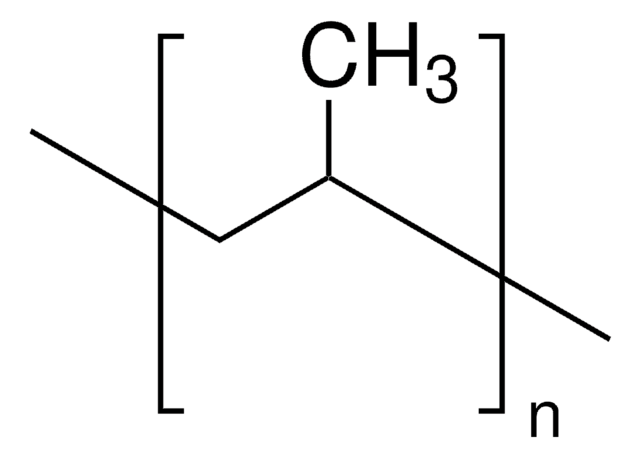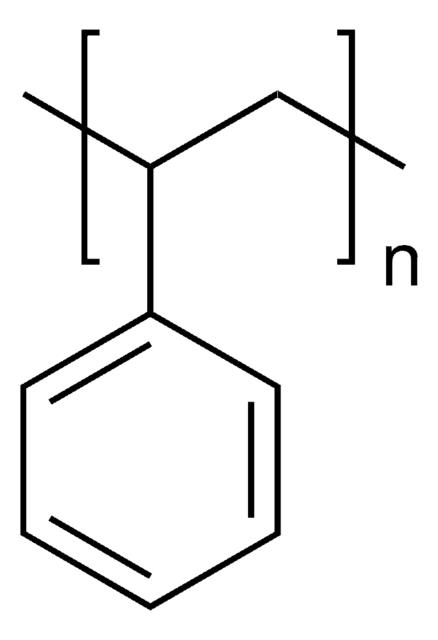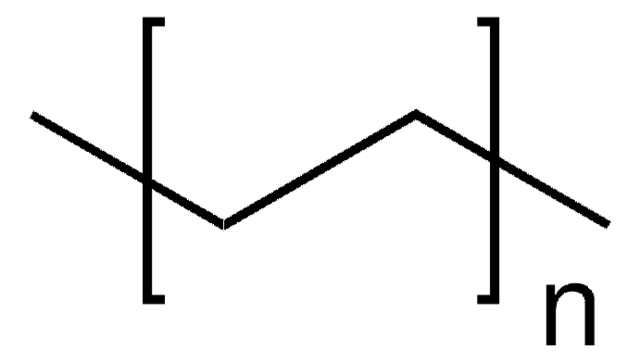427888
Polypropylene
Isotactic, average Mw ~250,000, average Mn ~67,000
Sinonimo/i:
PP, polypropene
About This Item
Prodotti consigliati
Livello qualitativo
Stato
beads
Indice di fluidità
12 g/10 min (230°C/2.16kg)
PM
average Mn ~67,000
average Mw ~250,000
Durezza
100 (Rockwell R, ASTM D 785-A)
Temp. transizione
Tm 160-165 °C
Densità
0.9 g/mL at 25 °C (lit.)
applicazioni
battery manufacturing
Stringa SMILE
CC=C
InChI
1S/C22H42O3/c1-2-3-4-5-11-14-17-20-21(25-20)18-15-12-9-7-6-8-10-13-16-19-22(23)24/h20-21H,2-19H2,1H3,(H,23,24)/t20-,21+/m1/s1
NSYDMBURIUSUDH-RTWAWAEBSA-N
Cerchi prodotti simili? Visita Guida al confronto tra prodotti
Categorie correlate
Applicazioni
Caratteristiche e vantaggi
Codice della classe di stoccaggio
11 - Combustible Solids
Classe di pericolosità dell'acqua (WGK)
WGK 3
Punto d’infiammabilità (°F)
Not applicable
Punto d’infiammabilità (°C)
Not applicable
Dispositivi di protezione individuale
Eyeshields, Gloves, type N95 (US)
Scegli una delle versioni più recenti:
Possiedi già questo prodotto?
I documenti relativi ai prodotti acquistati recentemente sono disponibili nell’Archivio dei documenti.
Global Trade Item Number
| SKU | GTIN |
|---|---|
| 427888-1KG | 4061832104751 |
| 427888-3KG |
Il team dei nostri ricercatori vanta grande esperienza in tutte le aree della ricerca quali Life Science, scienza dei materiali, sintesi chimica, cromatografia, discipline analitiche, ecc..
Contatta l'Assistenza Tecnica.



